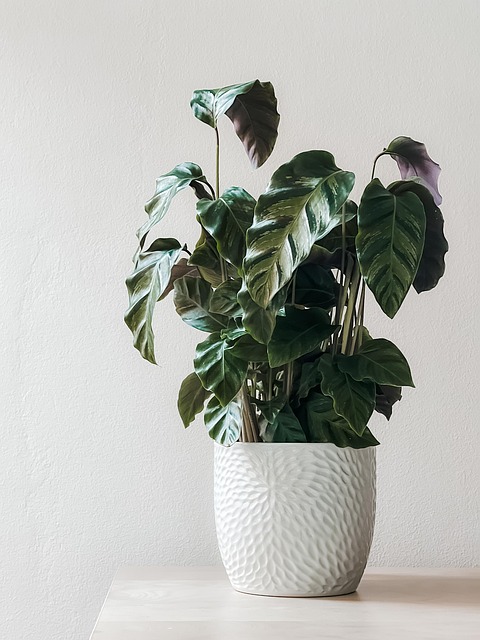Biophilic interior design leverages natural elements and patterns to enhance well-being and productivity in urban spaces. Plants act as effective air filters, purifying air and creating tranquil environments that promote health. Strategic plant placement absorbs VOCs and indoor pollutants, while visually appealing plants add tranquility and align with biophilic design principles for comfortable and healthier spaces. Incorporating greenery through biophilic design improves air quality and creates a beautiful, inviting ambiance.
In today’s digital era, biophilic interior design principles are transforming spaces, reconnecting us with nature. This article explores how strategic plant placement can elevate your environment, offering both optimal air purification and enhanced ambiance. We’ll delve into the science behind it, guiding you through selecting plants for maximum efficiency, integrating greenery aesthetically, and understanding the profound impact on both indoor air quality and overall well-being.
Understanding Biophilic Interior Design Principles
Biophilic interior design principles focus on connecting people with nature, even in urban environments. This approach emphasizes incorporating natural elements and patterns into indoor spaces to enhance well-being and productivity. By understanding and applying biophilic design, strategic plant placement can be optimized for not only air purification but also creating a soothing ambiance. Plants act as natural air filters, removing toxins and releasing oxygen, thereby improving indoor air quality. Additionally, their aesthetic appeal adds a touch of tranquility, fostering a healthier and more balanced living or working environment.
The Impact of Plant Placement on Air Quality
Strategic plant placement goes beyond aesthetics in a biophilic interior design. When thoughtfully incorporated, houseplants can significantly enhance air quality within spaces. Their leaves act as natural filters, absorbing volatile organic compounds (VOCs) emitted by furniture, flooring, and other materials. Some plants are particularly effective at removing common indoor pollutants like benzene, formaldehyde, and trichloroethylene, contributing to a healthier breathing environment.
Beyond direct air purification, plants also contribute to ambiance through their calming visual presence. The rhythm of fronds rustling in a gentle breeze or the vibrant hues of floral petals add a touch of tranquility to any interior. This combination of improved air quality and enhanced aesthetics makes strategic plant placement a powerful tool for creating both comfortable and healthier living and working spaces, aligning with the core principles of biophilic design.
Selecting Plants for Optimal Purification
When crafting a space with both optimal air purification and aesthetic appeal, the right plants are key. Incorporating vegetation into your biophilic interior design goes beyond aesthetics; it actively contributes to cleaner air and improved ambiance. Look for species known for their superior air-purifying qualities, such as Snake Plants (Sansevieria), Spider Plants (Chlorophytum comosum), and Peace Lilies (Spathiphyllum). These plants effectively filter out common indoor pollutants, including formaldehyde, benzene, and trichloroethylene, enhancing both the health and serenity of your environment.
In selecting your plant collection, consider the light levels in each area of your interior. Different plants thrive under various lighting conditions—some prefer bright, indirect light while others can tolerate lower light situations. Aligning plant choices with your space’s unique lighting characteristics ensures their long-term health and maximum air purification benefits. This thoughtful approach integrates nature seamlessly into your biophilic design, creating a harmonious atmosphere that is both visually pleasing and conducive to well-being.
Creating Ambiance through Strategic Greenery Integration
Incorporating greenery into your interior design is an effective way to enhance both air quality and create a soothing ambiance through strategic plant placement. The concept behind biophilic interior design, which emphasizes connecting humans with nature, can transform indoor spaces. Strategically placed plants act as natural air purifiers, absorbing pollutants and releasing oxygen.
Beyond their practical benefits, greenery adds visual interest and fosters a sense of tranquility. Curating a selection of plants tailored to your space’s lighting conditions and aesthetic preferences not only contributes to better health but also elevates the overall ambiance, making your environment more inviting and aesthetically pleasing.
Strategic plant placement is a powerful tool in achieving both optimal air purification and enhancing ambiance through biophilic interior design. By understanding the impact of plant selection and arrangement, designers can create vibrant, healthy spaces that improve overall well-being. Incorporating greenery strategically not only purifies the air but also adds a touch of nature’s serenity to any indoor environment, making it an essential consideration in modern design practices.
